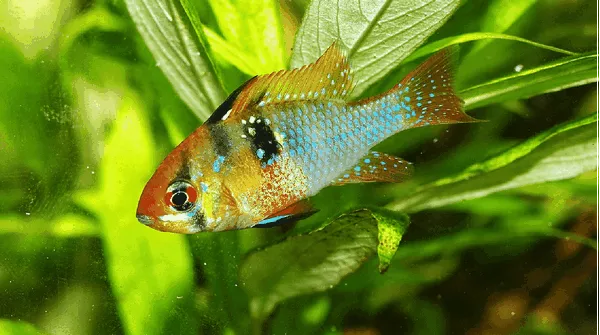The realm of exotic marine creatures has captivated the hearts and minds of aquarium enthusiasts for years. Among the most highly coveted and awe-inspiring species is the peppermint angelfish (Paracentropyge boylei). Renowned for its vibrant colors and striking patterns, this elusive fish commands an astonishingly high price in the aquarium trade. But what makes the peppermint angelfish so expensive? In this article, we will explore the factors that contribute to its rarity and exclusivity, shedding light on the mystery behind its exorbitant price tag.
Natural Habitat and Limited Distribution:
The peppermint angelfish is native to the remote waters of the eastern Indian Ocean and the western Pacific Ocean, specifically around the islands of Sumatra and Bali in Indonesia. Unlike many other species of angelfish, which inhabit a broader range, the peppermint angelfish has a significantly limited distribution. This restricted habitat contributes to its scarcity in the wild, making it a true gem for collectors and enthusiasts.
Elusive Nature and Low Population Density:
Adding to the challenge of obtaining peppermint angelfish is their elusive nature and low population density. These fish tend to inhabit deep coral reefs, often at depths of 150 to 300 feet (45 to 90 meters). Their preference for deep waters, coupled with their cryptic and solitary behavior, makes encountering and collecting them extremely difficult. Moreover, their small population size adds to their rarity, as there are simply not many individuals available for capture or breeding.
Challenging Collection Process:
The collection process for peppermint angelfish is both physically demanding and risky, further contributing to their high price. Diving to extreme depths requires specialized equipment and expertise, making the collection process more expensive and dangerous. Additionally, the delicate nature of peppermint angelfish necessitates careful handling and transport to ensure their survival, adding to the cost and complexity of their acquisition.
Complex Breeding and Rearing Requirements:
Due to the challenges associated with capturing peppermint angelfish from the wild, efforts to breed them in captivity have been undertaken. However, successful captive breeding is exceptionally rare, primarily due to their complex breeding requirements and specific dietary needs. Peppermint angelfish larvae have very specific dietary requirements, including the availability of live zooplankton, making their successful rearing a significant challenge for aquarists. The rarity of captive-bred specimens further drives up the price.
Exclusivity and Demand:
The rarity and limited availability of peppermint angelfish contribute to their exclusivity, increasing their desirability among collectors and aquarium enthusiasts. The high demand for these stunning fish further drives up their price in the market. Peppermint angelfish are often considered a holy grail species, with their striking red and white bands earning them a reputation as one of the most visually captivating angelfish in existence.
Conservation and Sustainable Practices:
The high price of peppermint angelfish has led to concerns about overexploitation and the impact on their natural populations. Recognizing the need for sustainable practices, some reputable suppliers and collectors are implementing responsible harvesting techniques and advocating for captive breeding programs. These initiatives aim to ensure the long-term survival of the species and minimize the impact on wild populations.
Conclusion:
The enigmatic allure and limited availability of the peppermint angelfish contribute to its status as one of the most expensive fish in the aquarium trade. Factors such as its restricted natural habitat, elusive nature, challenging collection process, complex breeding requirements, and high demand all contribute to its extraordinary price tag. While the cost may seem extravagant, it reflects the rarity and exclusivity of this breathtaking species. As conservation efforts and responsible practices continue to evolve, we hope to strike a delicate balance between preserving the beauty of the peppermint angelfish and ensuring the sustainability of its populations for generations to come.
Recommended reading:

























